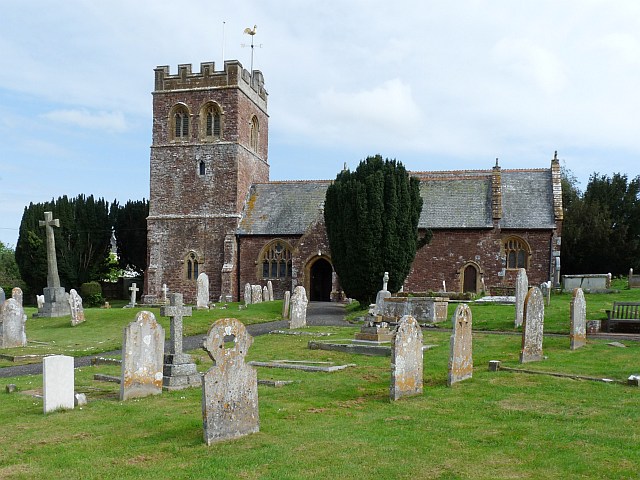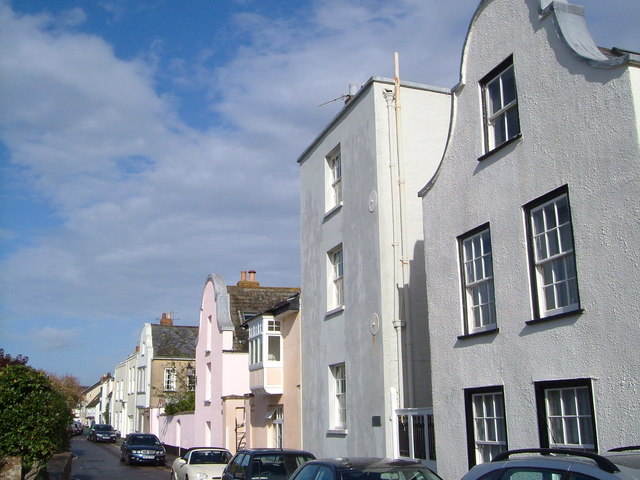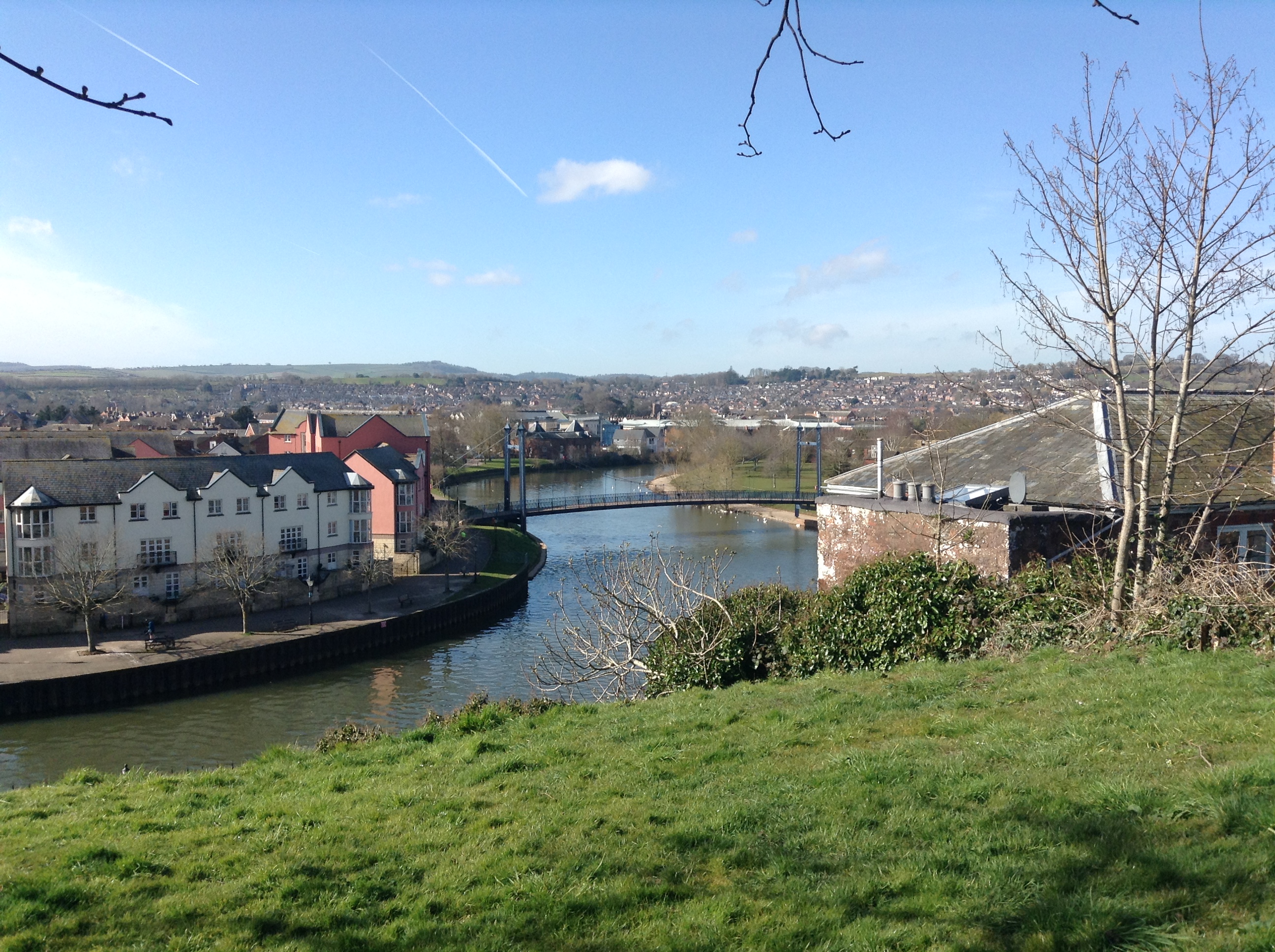|
River Clyst
The River Clyst is a river of Devon, England. The name derives from Old English, and translates as ''Clean-stream'' (the Welsh name of Clydach, has similar origins). The river lends its name to several settlements on its route, Clyst Honiton, Clyst St Lawrence, Clyst St George, and Broadclyst. The William part of Clyst William derives from the Old English of ''aewelm'', which means ''river source''. Rising near the village of Clyst William near Cullompton, the river runs for , west and southwest, flowing through the settlements of Norman's Green, Plymtree, Clyst Hydon, Clyst St. Lawrence, Westwood, emerging in the Clyst Valley. From there, the river goes southward through Broadclyst, West Clyst, Clyst Honiton, Clyst St. Mary and Clyst St. George, eventually flowing into the Exe estuary at Bowling Green Marsh, immediately south of the port of Topsham near Exeter. The river discharges per second on average, and is tidal from the Exe estuary as far as Newcourt Barton. I ... [...More Info...] [...Related Items...] OR: [Wikipedia] [Google] [Baidu] |
Clyst Honiton
Clyst Honiton (or Honiton Clyst) is an English village and civil parish five miles from Exeter in the East Devon district, in the county of Devon. The church is St Michael and All Angels. Exeter International Airport which opened in 1938 is located on the outskirts of the village. The village was originally on the main A30 road from Exeter to Honiton but was bypassed in the 1990s. Another bypass to the east of the village linking the A30 to the new developments around Cranbrook opened in October 2013. The parish is surrounded clockwise from the north by the parishes of Broad Clyst, Rockbeare, Aylesbeare, Farringdon and Sowton. In 2001 its population was 295. The village is mentioned in the Robyn Hitchcock Robyn Rowan Hitchcock (born 3 March 1953) is an English singer-songwriter and guitarist. While primarily a vocalist and guitarist, he also plays harmonica, piano, and bass guitar. After leading the Soft Boys in the late 1970s and releasing the ... song " Goodnight I Sa ... [...More Info...] [...Related Items...] OR: [Wikipedia] [Google] [Baidu] |
Royal Society For The Protection Of Birds
The Royal Society for the Protection of Birds (RSPB) is a charitable organisation registered in England and Wales and in Scotland. It was founded in 1889. It works to promote conservation and protection of birds and the wider environment through public awareness campaigns, petitions and through the operation of nature reserves throughout the United Kingdom. In 2020/21 the RSPB had an income of £117 million, 2,000 employees, 12,000 volunteers and 1.1 million members (including 195,000 youth members), making it one of the world's largest wildlife conservation organisations. The RSPB has many local groups and maintains 222 nature reserves. As founders, chief officers and presidents, women have been at the helm of the RSPB for over 85 years. History The origins of the RSPB lie with two groups of women, both formed in 1889: * The Plumage League was founded by Emily Williamson at her house in Didsbury, Manchester, as a protest group campaigning against the use of great crested ... [...More Info...] [...Related Items...] OR: [Wikipedia] [Google] [Baidu] |
Canada Goose
The Canada goose (''Branta canadensis''), or Canadian goose, is a large wild goose with a black head and neck, white cheeks, white under its chin, and a brown body. It is native to the arctic and temperate regions of North America, and it is occasionally found during migration across the Atlantic in northern Europe. It has been introduced to the United Kingdom, Ireland, Finland, Sweden, Denmark, New Zealand, Japan, Chile, Argentina, and the Falkland Islands. Like most geese, the Canada goose is primarily herbivorous and normally migratory; often found on or close to fresh water, the Canada goose is also common in brackish marshes, estuaries, and lagoons. Extremely adept at living in human-altered areas, Canada geese have established breeding colonies in urban and cultivated habitats, which provide food and few natural predators. The success of this common park species has led to its often being considered a pest species because of its excrement, its depredation of crops, its n ... [...More Info...] [...Related Items...] OR: [Wikipedia] [Google] [Baidu] |
Brant Goose
The brant or brent goose (''Branta bernicla'') is a small goose of the genus ''Branta''. There are three subspecies, all of which winter along temperate-zone sea-coasts and breed on the high-Arctic tundra. The Brent oilfield was named after the species. Description The brant is a small goose with a short, stubby bill. It measures long, across the wings and weighs . The under-tail is pure white, and the tail black and very short (the shortest of any goose). The species is divided into three subspecies: * Dark-bellied brant goose ''B. b. bernicla'' (Linnaeus, 1758) * Pale-bellied brant goose ''B. b. hrota'' ( Müller, 1776) (also known as light-bellied brent goose in Europe, and Atlantic brant in North America) * Black brant goose ''B. b. nigricans'' (Lawrence, 1846) (sometimes also known as the Pacific brant in North America) Some DNA evidence suggests that these forms are genetically distinct; while a split into three separate species has been proposed, it is not wide ... [...More Info...] [...Related Items...] OR: [Wikipedia] [Google] [Baidu] |
Grade II Listed
In the United Kingdom, a listed building or listed structure is one that has been placed on one of the four statutory lists maintained by Historic England in England, Historic Environment Scotland in Scotland, in Wales, and the Northern Ireland Environment Agency in Northern Ireland. The term has also been used in the Republic of Ireland, where buildings are protected under the Planning and Development Act 2000. The statutory term in Ireland is " protected structure". A listed building may not be demolished, extended, or altered without special permission from the local planning authority, which typically consults the relevant central government agency, particularly for significant alterations to the more notable listed buildings. In England and Wales, a national amenity society must be notified of any work to a listed building which involves any element of demolition. Exemption from secular listed building control is provided for some buildings in current use for worship, ... [...More Info...] [...Related Items...] OR: [Wikipedia] [Google] [Baidu] |
National Cycle Network
The National Cycle Network (NCN) is the national cycling route network of the United Kingdom, which was established to encourage cycling and walking throughout Britain, as well as for the purposes of bicycle touring. It was created by the charity Sustrans who were aided by a £42.5 million National Lottery grant. However Sustrans themselves only own around 2% of the paths on the network, these rest being made of existing public highways and rights of way, and permissive paths negotiated by Sustrans with private landowners, which Sustrans have then labelled as part of their network. In 2017, the Network was used for over 786 million cycling and walking trips, made by 4.4 million people. In 2020, around a quarter the NCN was scrapped on safety grounds, leaving of signed routes. These are made up of of traffic-free paths with the remaining on-road. It uses shared use paths, disused railways, minor roads, canal towpaths and traffic-calmed routes in towns and cit ... [...More Info...] [...Related Items...] OR: [Wikipedia] [Google] [Baidu] |
Exeter
Exeter () is a city in Devon, South West England. It is situated on the River Exe, approximately northeast of Plymouth and southwest of Bristol. In Roman Britain, Exeter was established as the base of Legio II Augusta under the personal command of Vespasian. Exeter became a religious centre in the Middle Ages. Exeter Cathedral, founded in the mid 11th century, became Anglican in the 16th-century English Reformation. Exeter became an affluent centre for the wool trade, although by the First World War the city was in decline. After the Second World War, much of the city centre was rebuilt and is now a centre for education, business and tourism in Devon and Cornwall. It is home to two of the constituent campuses of the University of Exeter: Streatham and St Luke's. The administrative area of Exeter has the status of a non-metropolitan district under the administration of the County Council. It is the county town of Devon and home to the headquarters of Devon County Council. A p ... [...More Info...] [...Related Items...] OR: [Wikipedia] [Google] [Baidu] |
Topsham, Devon
Topsham (, also ) is a town in Devon, England, located on the east side of the River Exe, immediately north of its confluence with the River Clyst and the former's estuary, between Exeter and Exmouth. Topsham is a historic port and was designated a town by a 1300 royal charter granted by Edward I; it was formally amalgamated into the City of Exeter in 1966. The town is served by Topsham railway station, about midway on the branch line from Exeter Central to Exmouth, now called the Avocet Line; 2011 saw the 150th anniversary of the railway coming to Topsham. The electoral ward of Topsham had a population recorded at 5,519 in the 2011 census, though this ward extends further northwest and includes the east half of Countess Wear as well as the new suburb of Newcourt. History The native Celtic settlement of Topsham became the port of the Roman city of Isca Dumnoniorum (Exeter) in the first century AD, and continued to serve it until the Roman occupation of southern Britain cea ... [...More Info...] [...Related Items...] OR: [Wikipedia] [Google] [Baidu] |
RSPB Bowling Green Marsh
Bowling Green Marsh is a nature reserve located on the confluence of the River Exe (at the top end of its estuary) and the River Clyst, near the town of Topsham in Devon. It is managed by the RSPB. Migratory birds including Siberian brent geese, come to the marsh in the winter to feed. It is a major point of interest for birders across South West Britain, with many rare species present at any one time. Other visitors include osprey, wigeon, teal, avocet and black-tailed godwit, and many other waders. Several fish species inhabit the marsh's many pools. Otters have been sighted here, as well. There is a wheelchair-accessible bird hide on the marshes and a viewing platform, reached by steps, with views down the estuary. Occasionally, very rare vagrants, such as Barrow's goldeneye or king eider, stop at the marshes on their migration. [...More Info...] [...Related Items...] OR: [Wikipedia] [Google] [Baidu] |
River Exe
The River Exe ( ) in England rises at Exe Head, near the village of Simonsbath, on Exmoor in Somerset, from the Bristol Channel coast, but flows more or less directly due south, so that most of its length lies in Devon. It flows for 60 miles (96 km) and reaches the sea at a substantial ria, the Exe Estuary, on the south (English Channel) coast of Devon. Historically, its lowest bridging point was the Old Exe Bridge in Exeter, the largest settlement on the river, but there is now a viaduct for the M5 motorway about south of the city centre. Topography The river's name derives from *Uɨsk, a Common Brittonic root meaning "abounding in fish", and a cognate of both the Irish ''iasc'', meaning "fish", and ''pysg'', the plural word for "fish" in Welsh. The same root separately developed into the English Axe and Esk, the Welsh Usk, though not, as some have claimed, the word ''whisky'', this latter being from the Classical Irish/Gaelic "water" (the fuller phrase being ; ... [...More Info...] [...Related Items...] OR: [Wikipedia] [Google] [Baidu] |
West Clyst
West or Occident is one of the four cardinal directions or points of the compass. It is the opposite direction from east and is the direction in which the Sun sets on the Earth. Etymology The word "west" is a Germanic word passed into some Romance languages (''ouest'' in French, ''oest'' in Catalan, ''ovest'' in Italian, ''oeste'' in Spanish and Portuguese). As in other languages, the word formation stems from the fact that west is the direction of the setting sun in the evening: 'west' derives from the Indo-European root ''*wes'' reduced from ''*wes-pero'' 'evening, night', cognate with Ancient Greek ἕσπερος hesperos 'evening; evening star; western' and Latin vesper 'evening; west'. Examples of the same formation in other languages include Latin occidens 'west' from occidō 'to go down, to set' and Hebrew מַעֲרָב maarav 'west' from עֶרֶב erev 'evening'. Navigation To go west using a compass for navigation (in a place where magnetic north is the same dire ... [...More Info...] [...Related Items...] OR: [Wikipedia] [Google] [Baidu] |


.jpg)






